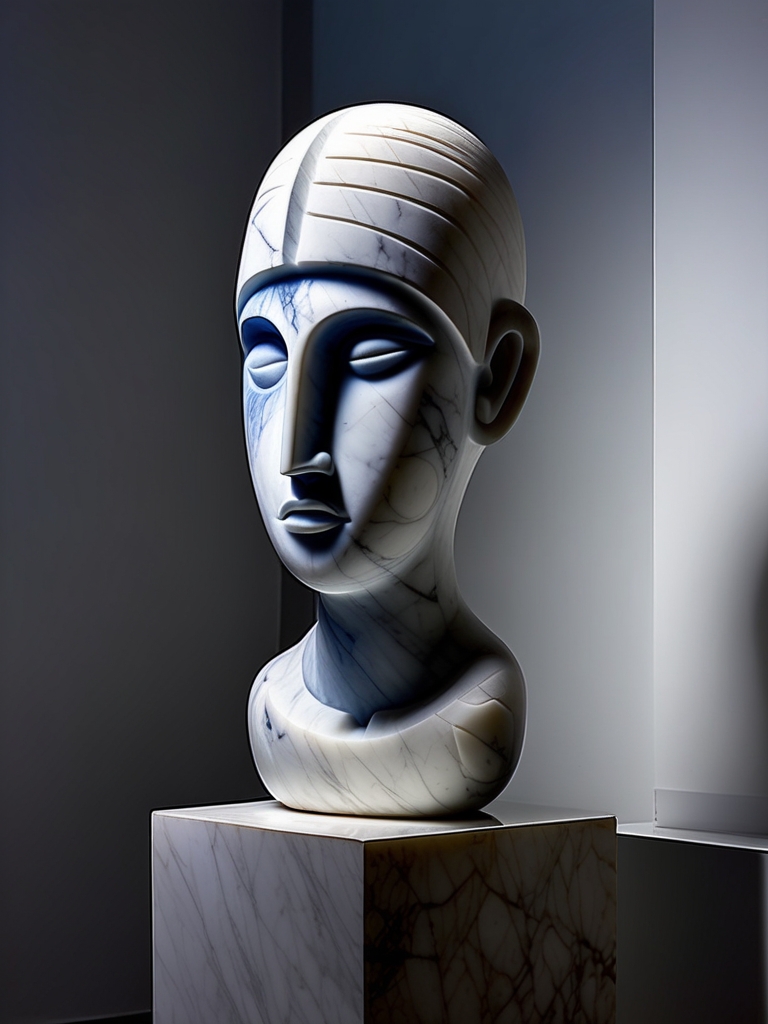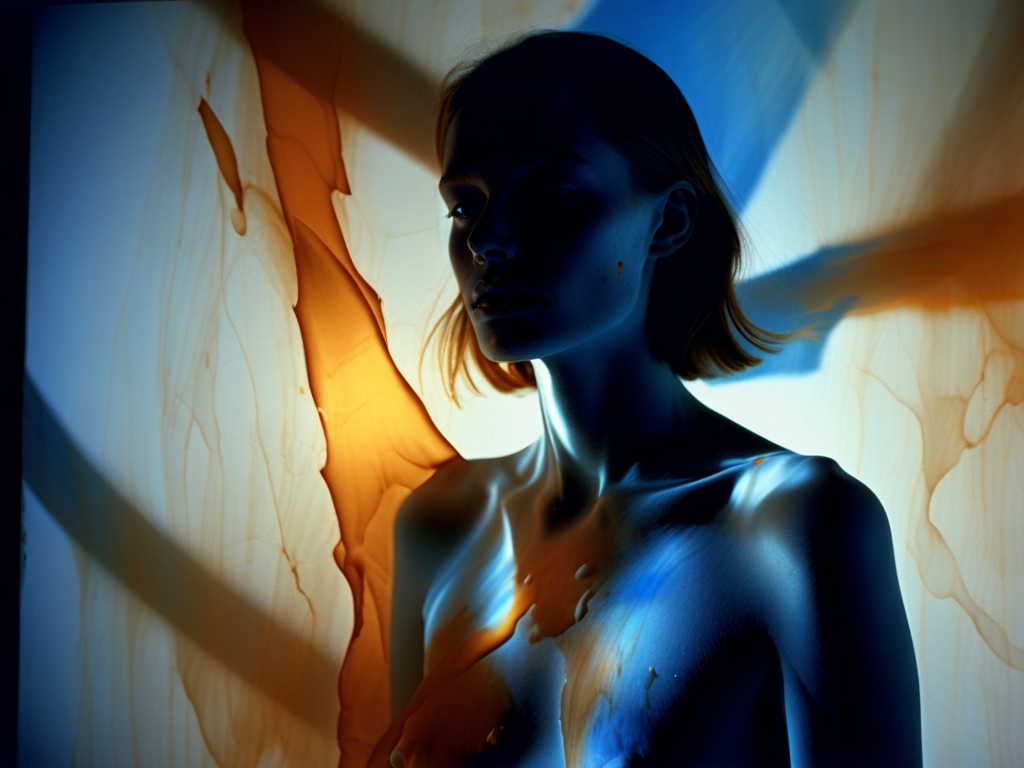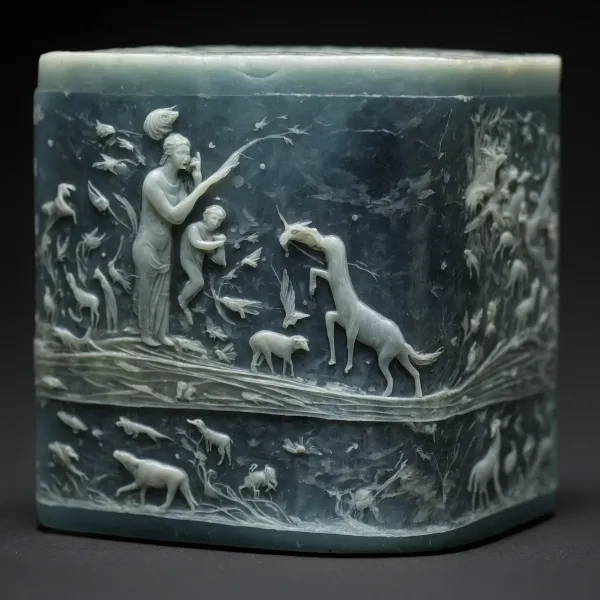The Beautiful Face of the Cosmos
A sculptor believed that the blessing of a radiant goddess had secured him a place of honor in history. But history would soon prove him wrong.
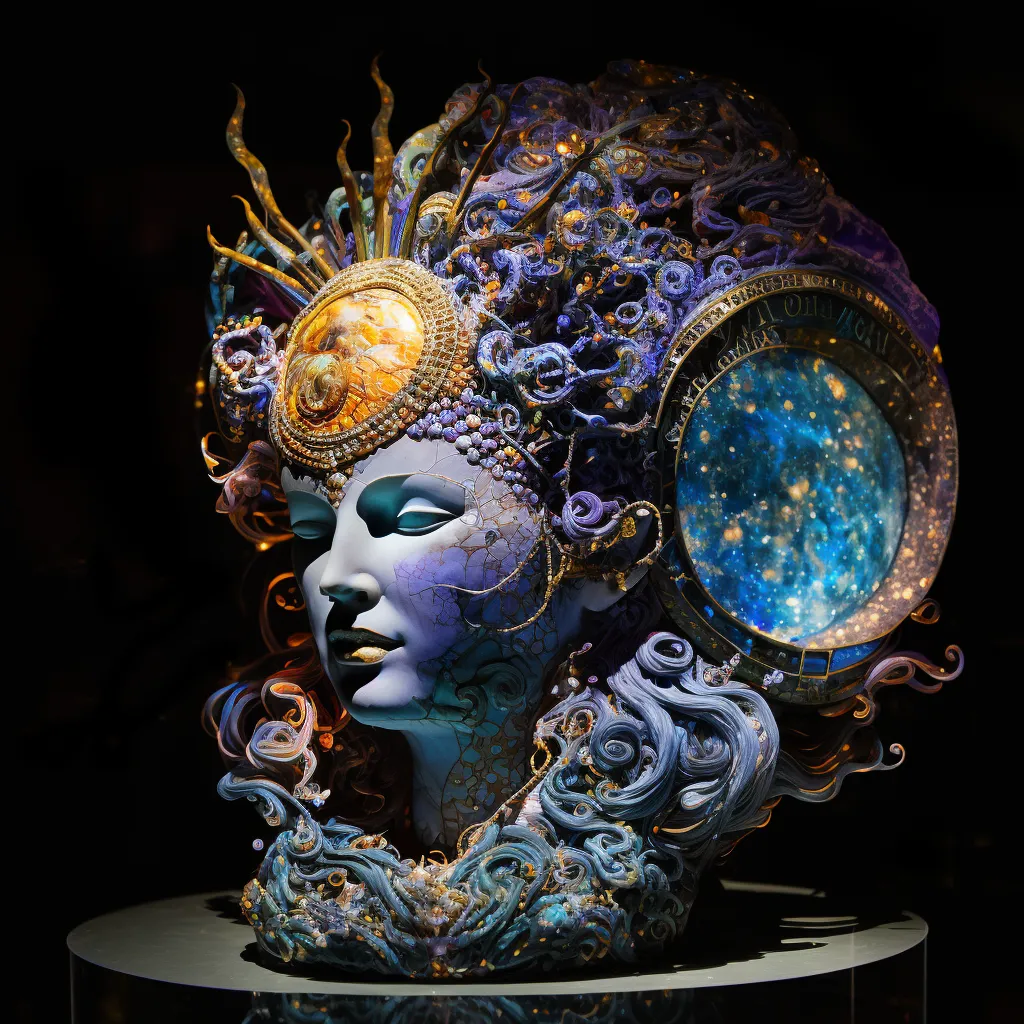
Thibault LaFontaine is well-known as a mystic, scholar, and key figure in the French Numinous Revolution (1789), but not many people are aware of his prowess as a sculptor.
LaFontaine's busts carry a hint of the Rococo—as we can see in the extravagant ornamentation of this bust's hairdo and clothing—while he sculpted his faces with a finesse that's characteristic to Neoclassicism. However, his bold and dazzling use of color places him outside any particular movement, earning him a unique point of interest that still inspires artists today.
When it comes to his themes, LaFontaine's statues follow the mythos, philosophy, and cosmogony he compiled in Le Nouvel Âge du Cosmos, which he wrote while living in the court of the Nightshade King as Chair of Astronomy and Astrology. He followed a lifelong interest in cosmic matters that had started after witnessing the famous meteor shower that crossed the skies of the Northern Hemisphere in 1775.
LaFountaine had always been loyal to the crown, but that would change in the Spring of 1786, when he called the King an impostor during the Magical Conclave at Versailles. When questioned about his madness, he alleged the Cosmic Goddess had spoken to him and revealed the truth about the Royal House of Belladone.
He stood up, pointing an accusatory finger at the throne.
"The Cosmic Goddess has talked to me and unveiled my eyes. The arcane boons of our royals doesn't come from our sacred cosmos, but from the void itself!"
Whispers of blasphemy echoed all around the hall, but I also saw the shadow of a doubt behind my fellow conjurers' eyes.
- Sylvain de la Croix, The Magical Conclave (1788)
LaFountaine was immediately imprisoned, and his body of work seized and destroyed. Lucky for us and art history, he'd hidden two of his busts—both purchased for the Ravensfield Collection at the same time by H.C. Ravensfield himself in 1960, one of his last acquisitions— and a copy of Le Nouvel Âge du Cosmos behind a wall in a farmhouse in the outskirts of Paris.
This priceless treasure trove remained unseen until 1958, when the American mystery author Dane Collier bought the farmhouse, and followed what he described as a melodic humming that came from within the walls at night. This anecdote also inspired his eerie short story The Wall and the Goddess (1962).
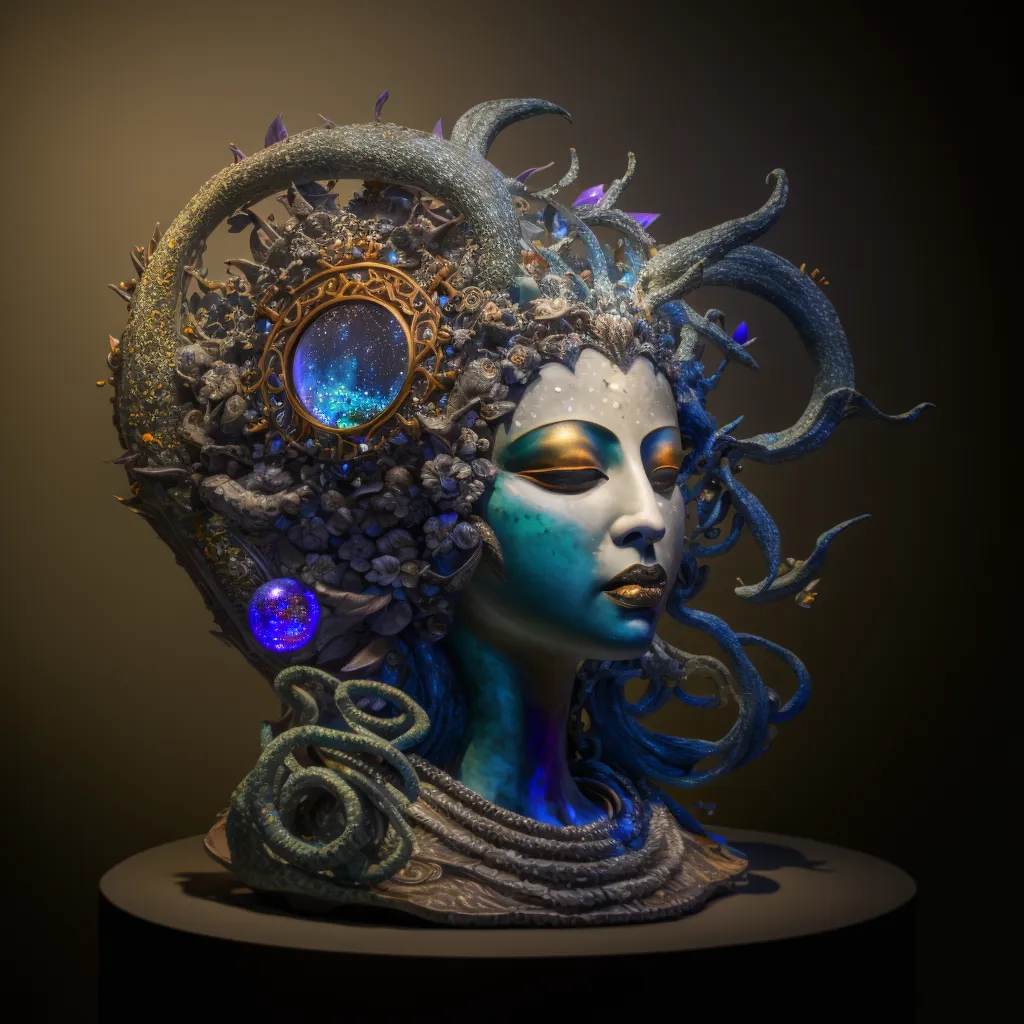
About the last days of Thibault LaFontaine, he escaped imprisonment using his many contacts at the palace. He became one of the most fervid instigators of the Numinous Revolution, sharing the names and locations of many of the crown's sympathizers, which included his childhood friend and confident Auduoard DuMarais.
Unfortunately, when the new republic found out LaFountaine had been secretly commanding a group of mystics called The Polychromatic Acolytes, he was instantly arrested and condemned to death.
Thibault LaFountaine was guillotined in the spring of 1795. His head was painted in many colors and displayed in front of Paris' Hôtel de Ville as a warning to his Acolytes.
LaFountaine was the only artist to ever represent the Cosmic Goddess, as no other artwork has ever referenced her since his death. However, some historians believe The Polychromatic Acolytes still exist, although no one knows who or where they are, or what their mission has been for the past three centuries.

